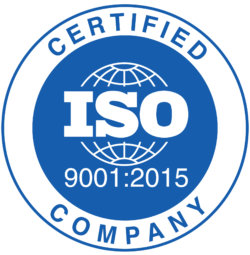
There is an everlasting conflict between employees of the Production and Quality Control Departments. The former think that they are held accountable for the quantity of the manufactured goods and the Quality Control employees believe that they are responsible for good value of the finished product. In business, complaints do not benefit anyone. They actually harm both departments, the entire company and also the customer. It does happen, however, that each party mistakenly considers its own point of view as the most important for the company. The point of reference for the company should actually be the generation of profits, and this may suffer in the case of the low quality of received materials and produced elements.
How to ensure quality
Standard, manuals, and rules of conduct undoubtedly help in assuring quality. Software that facilitates a more efficient management of product and quality documentation is gaining popularity. For years, we have also been hearing about quality management systems. The most popular ones are Six sigma, CAF, Lean management or Total Quality Management. However, the most universal quality standard is ISO 9001. Applying its guidelines increases the efficiency of a company’s operation and ensures appropriate quality. Further, meeting the requirements of the standard is regarded as a major benefit for the company. The requirements of ISO certification mainly concern constant improvement of quality, system of quality control, application of guidelines regarding the implementation of new standards as well as using particular terminology.
Input and output control
One of the most important quality control points are the moments of semi-finished product entry into the company and the moment of product release. Input and output control most often takes place according to the internal principles of the company, regulations and in reference to specific benchmarks. However, there are some universal patterns. The first element to be checked is the transport conditions of the received semi-finished product, next, the documentation needs to be examined, and finally, the condition of the product itself should be verified. At the same time, it is necessary to bear in mind that the product should be tested on samples. With every subsequent positively verified batch delivered by a given supplier, the amount of the tested elements may be reduced in order to increase the process speed.
Let’s learn to communicate
Concealment of mistakes or shortcomings is an undesired behaviour within a company. A properly functioning business enterprise should operate in such a way as to facilitate good communication between all departments, which eagerly share all information – also the unfavourable ones. Exactly the same principle needs to be applied in contacts between the manufacturer and its customers. A company should notify customers about delivery errors, faulty components, mistakes in production and any possible shortcomings of the finished product. A customer may turn a blind eye on a one-off blunder if they are sincerely informed and apologised to.
Dialogue is the key issue and it should be characterised with some permanent features such as understanding and empathy but also solid arguments, such as facts and figures. What also counts is full awareness of mutual co-operation of all departments for the same clearly defined objective.
How it works in Politech
For almost 20 years of its business activity, Politech has developed its own system of quality management. The company uses internal regulations regarding semi-finished product acceptance providing its employees with a number of guidelines and patterns of behaviour. However, communication between particular departments remains paramount. The effective information exchange among employees is supported by Galactica software. In Politech, it is the Logistics Department that is responsible for transport documentation and it closely cooperates with Quality Control at the time of semi-finished product acceptance. In the case of defect detection, the Quality Control Department notifies the Sales Department, which immediately informs both the supplier and the client. The Sales Department is responsible for sharing the information regarding the quality of the delivered semi-finished product and the production process with the counterparties, thus, building a relationship based on trust and reliability.
After positive assessment of the semi-finished product, the Production Department takes over and here, the communication with the Quality Control is considered a priority. The production process is strictly controlled at every stage both by the Production Department and Quality Control employees. Numerous quality patterns, quality tables or tests are used for this purpose. In the final phase, the finished element is inspected equally thoroughly as at the input. After the final approval of the product quality, the Logistics Department organises shipment.
Powrót do listy artykułów









